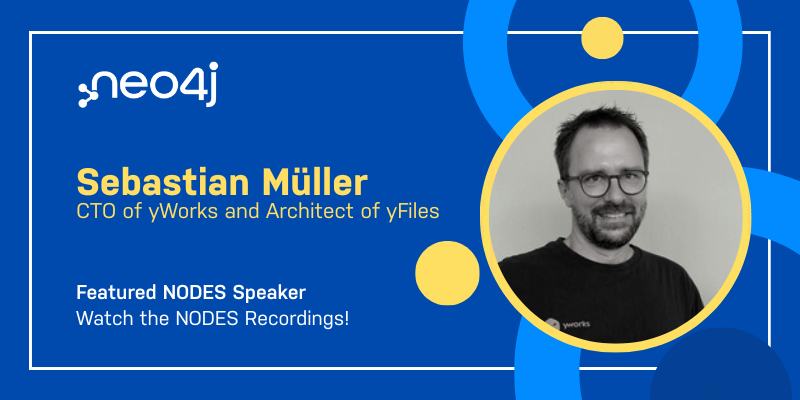Cheers,
Yolande Poirier
P.S.: If you’re a developer building modern applications with GraphQL, don’t forget to take this short, two-minute survey. We want to hear from you!
FEATURED NODES SPEAKER: Sebastian Müller
In his NODES 2022 presentation, he explores the contents of your Neo4j graph database visually, right inside your Jupyter notebooks. He creates powerful notebook scripts that connect to your graph database using Python, executes Cypher queries, and runs graph data science algorithms. Watch his talk “Explore Your Graphs Visually With Jupyter Notebooks”!

GEOSPATIAL: Spatial Search Functionality With Neo4j
In this post, William Lyon explores some techniques for working with geospatial data in Neo4j. He covers some basic spatial Cypher functions, spatial search, routing algorithms, and different methods of importing geospatial data into Neo4j.AI: When Is the Closeness Centrality Algorithm Best Applied?
Closeness Centrality algorithms are unique because they are typically used to find nodes that can quickly interact with other nodes. Fatima Rubio, Sr. Data Scientist, examines how the algorithm works, how to use it in practice, and how to account for edge cases.NODES SESSION: Graph Pattern Matching
ML: Conversational Artificial Intelligence With Neo4j and Unreal Engine — Part 2
DATABASE: Taking CosmosDB and Pushing to Neo4j
APP DEVELOPMENT: Run Cypher Without Leaving Your IDE With Neo4j VSCode Extension
KNOWLEDGE GRAPH: Project Management is a Graph Problem
TWEET OF THE WEEK: @ApitiusHofmann
Don’t forget to retweet, if you like it!First prototype of the anomaly detection front end based on @neo4j technology. The graph-based approach we develop goes beyond everything done so far in the pandemic intelligence data world. @rki_de @Fraunhofer_IUK @WHO @ChanasitJonas pic.twitter.com/3OmIGTJ4xX
— Hofmann-Apitius (@ApitiusHofmann) January 18, 2023
COMING UP NEXT
-
- Discover AuraDB with Michael and Alexander on January 30, 2023.
- Neo4j Live: Crossr – Knowledge Graph Based Drug Discovery on January 31, 2023.
- Webinar: Full Stack GraphQL Applications: Leveraging the Power of GraphQL on January 31, 2023.
- Full Stack GraphQL Book Club, Chapter 9: Advanced GraphQL Considerations on February 1, 2023.
Related Articles



